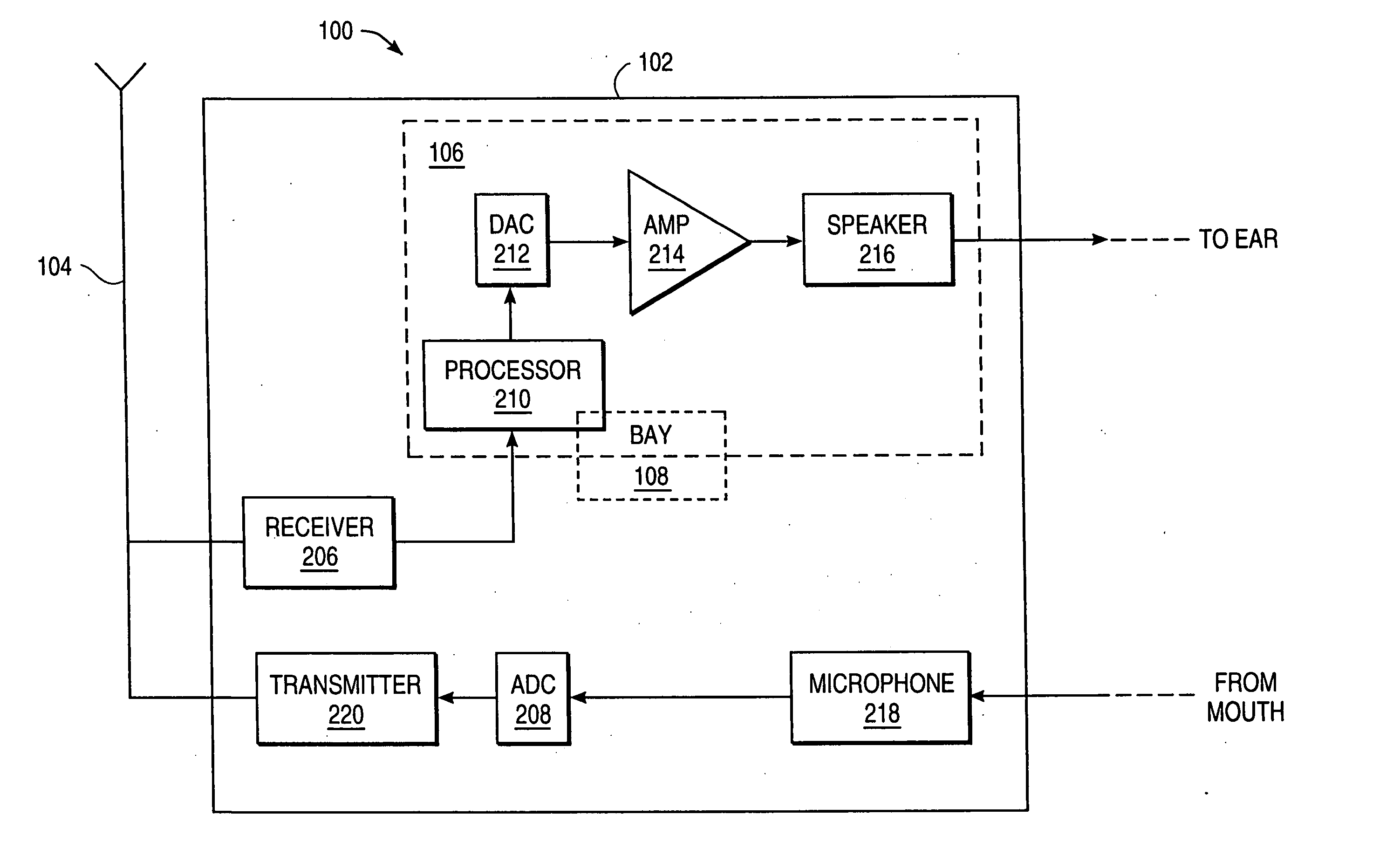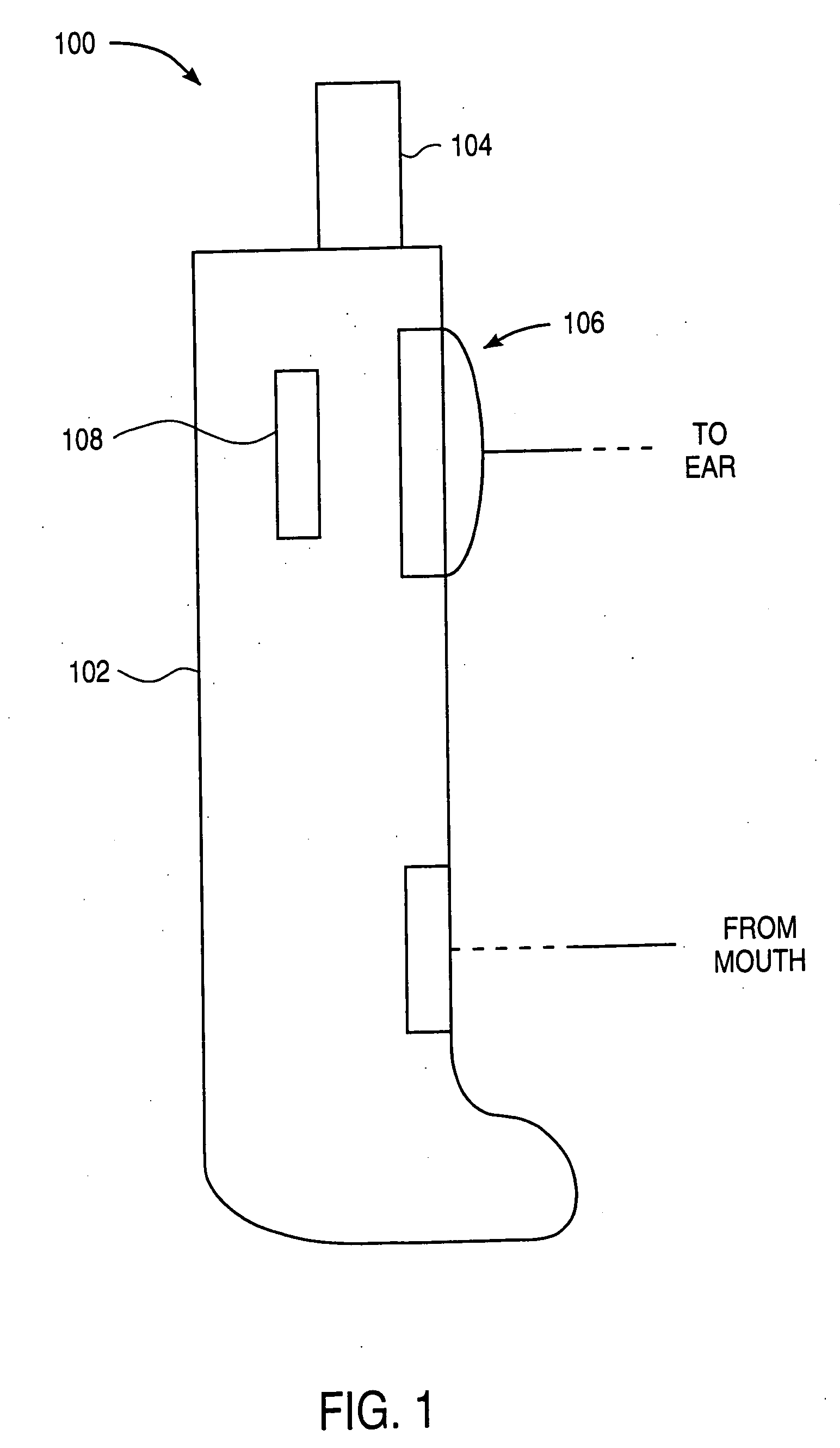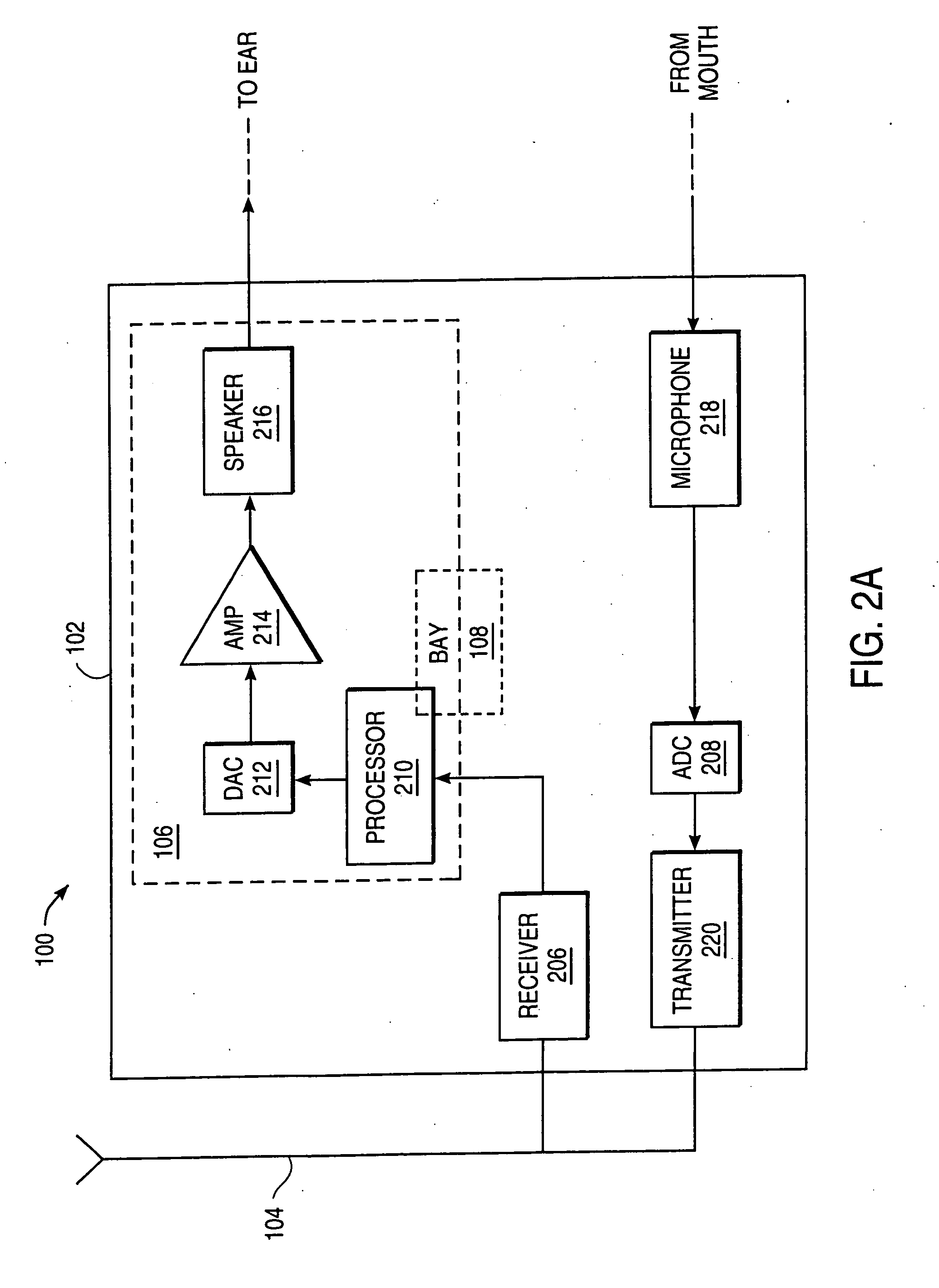Integrated hearing aid for telecommunications devices
a technology of integrated hearing aids and telecommunications devices, applied in the field of telecommunications and telephonic devices, can solve the problems of distortion and radio frequency interference, less useful when combined with signals from electronic devices, such as wireless telephones, and people losing the ability to hear in only a small range of frequencies, so as to avoid rf interference in the output of hearing aids
- Summary
- Abstract
- Description
- Claims
- Application Information
AI Technical Summary
Benefits of technology
Problems solved by technology
Method used
Image
Examples
Embodiment Construction
[0017] An integrated wireless telephone / hearing aid system 100 in accordance with the present invention is schematically illustrated in FIG. 1. In FIG. 1, the user's ear and mouth fit with a handset 102 as indicated in the figure. Wireless handset 102 also includes an antenna 104, an integrated hearing aid device 106, and a smart card bay 108.
[0018]FIGS. 2A and 2B illustrate alternative configurations of the electrical components of the system of FIG. 1. FIG. 2A shows a digital wireless system. In the system shown in FIG. 2A, a wireless signal is picked up by handset antenna 104 and transmitted to integrated hearing aid device 106. A receiver 206 receives the digital wireless signal picked up by antenna 104 and generates a digital audio signal. The audio signal is then transmitted to a processor 210.
[0019] A user's prescription is programmed into processor 210. Processor 210 transforms the signal by applying a transfer function with more gain in the frequency ranges where the user...
PUM
 Login to View More
Login to View More Abstract
Description
Claims
Application Information
 Login to View More
Login to View More - R&D
- Intellectual Property
- Life Sciences
- Materials
- Tech Scout
- Unparalleled Data Quality
- Higher Quality Content
- 60% Fewer Hallucinations
Browse by: Latest US Patents, China's latest patents, Technical Efficacy Thesaurus, Application Domain, Technology Topic, Popular Technical Reports.
© 2025 PatSnap. All rights reserved.Legal|Privacy policy|Modern Slavery Act Transparency Statement|Sitemap|About US| Contact US: help@patsnap.com



